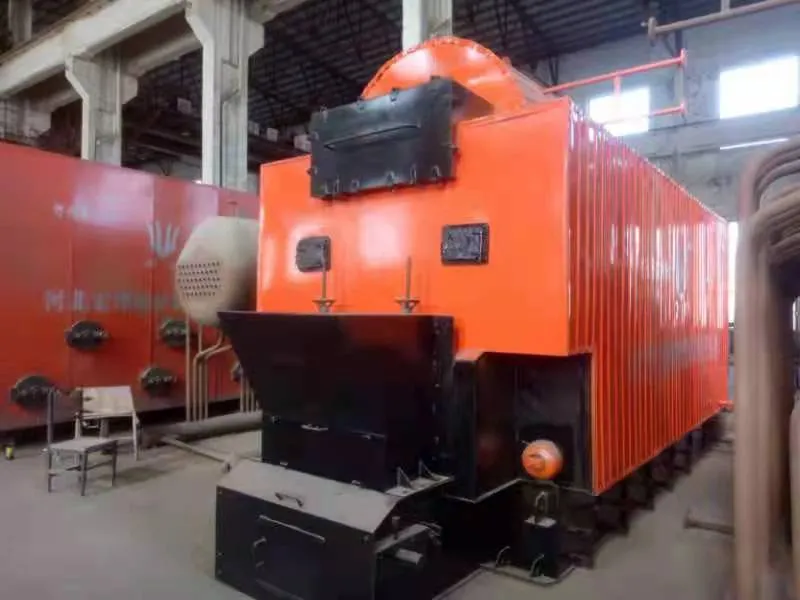
फरवरी . 05, 2025 02:02 Back to list
steam boiler vs steam generator
The domain of industrial heating systems often presents a complex interplay of machinery and technical expertise. Among the most debated topics in this arena is the distinction between steam boilers and steam generators. Although they serve similar fundamental purposes—producing steam—their applications, efficiencies, and designs vary considerably. A comprehensive understanding of these differences not only aids in making informed decisions but also enhances operational efficiency across various industries.
The authoritativeness of these systems is rooted in their compliance with regulatory standards and manufacturing guidelines. Steam boilers, due to their scale and potential hazardous nature, are subjected to stringent safety standards and routine inspections, ensuring operational safety and reliability. Steam generators, though involving less-intensive compliance, still adhere to rigorous industry standards and are increasingly adopting advanced technologies like IoT for predictive maintenance, reinforcing their accountability and reducing operational downtimes. Trustworthiness also plays a pivotal role in selecting between these systems. Decision-makers lean heavily on industry certifications, user testimonials, and technical audits to ascertain the most reliable option. Vendors specializing in steam technology often provide thorough training, maintenance programs, and 24/7 support to bolster user confidence in their products. In the realm of product applications, both steam boilers and generators showcase extensive versatility. Boasting varied industrial applications such as textile manufacturing, oil refineries, chemical processing, and beyond, the choice between a steam boiler and a generator typically hinges on specific industry needs, energy efficiency goals, available space, and initial investment considerations. In summation, the decision between steam boilers and steam generators is not merely a technical one but involves a strategic assessment of industry requirements, operational priorities, and long-term sustainability goals. Understanding these aspects eloquently bridges the gap between traditional heating methodologies and modern technological advancements, securing a competitive edge in the industrial landscape.


The authoritativeness of these systems is rooted in their compliance with regulatory standards and manufacturing guidelines. Steam boilers, due to their scale and potential hazardous nature, are subjected to stringent safety standards and routine inspections, ensuring operational safety and reliability. Steam generators, though involving less-intensive compliance, still adhere to rigorous industry standards and are increasingly adopting advanced technologies like IoT for predictive maintenance, reinforcing their accountability and reducing operational downtimes. Trustworthiness also plays a pivotal role in selecting between these systems. Decision-makers lean heavily on industry certifications, user testimonials, and technical audits to ascertain the most reliable option. Vendors specializing in steam technology often provide thorough training, maintenance programs, and 24/7 support to bolster user confidence in their products. In the realm of product applications, both steam boilers and generators showcase extensive versatility. Boasting varied industrial applications such as textile manufacturing, oil refineries, chemical processing, and beyond, the choice between a steam boiler and a generator typically hinges on specific industry needs, energy efficiency goals, available space, and initial investment considerations. In summation, the decision between steam boilers and steam generators is not merely a technical one but involves a strategic assessment of industry requirements, operational priorities, and long-term sustainability goals. Understanding these aspects eloquently bridges the gap between traditional heating methodologies and modern technological advancements, securing a competitive edge in the industrial landscape.
Share
Latest News
-
Best Steam Boiler Design PDF Free Design Calculation & Diagram Downloads
NewsJun.10,2025
-
Hot Boiler Water Heater Efficient Heating Solutions for Home & Commercial Use
NewsJun.10,2025
-
Steam Boiler Safety Devices High-Quality Protection Valves
NewsJun.10,2025
-
Ultimate Steam Boiler Checklist for Safety & Efficiency
NewsJun.10,2025
-
Optimal Hot Water Boiler Temperature Setting Guide
NewsJun.10,2025
-
Effective Hot Water Boiler Chemical Treatment Protect & Maintain
NewsJun.09,2025
Related PRODUCTS
Copyright © 2025 HEBEI HONGZE BOILER MANUFACTURING CO., LTD. All Rights Reserved. Sitemap | Privacy Policy






















